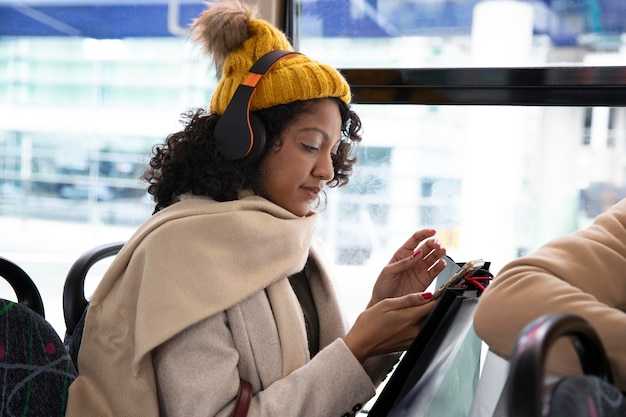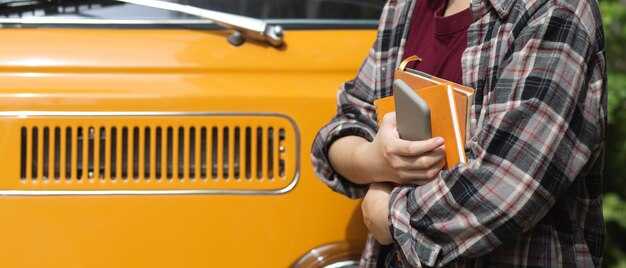If you are an experienced traveler, the easiest way to reach Fes is a direct coach from tangier or casablanca. Tickets are available online through CTM または Supratours or at the central city stations. Those who need flexibility can choose a trans option with a change of route. Departures run daily from about 07:00 to 21:00, with multiple options each day. having a reserved seat speeds boarding and secures a window view on the coaster highway toward the city.
Timetables generally stay stable for the main routes. A direct tangier–Fes トリップ on a mercedes coach takes roughly 6 hours; casablanca–Fes trips run 4–5 hours. Routes from agadir often involve one transfer and stretch to 9–11 hours. For reliability, stick to CTM and Supratours, which publish real-time updates at their central hubs and online.
Tickets and prices vary with route and seating. Expect roughly 250–450 MAD one-way for standard seats; premium seats or flexible fares are usually higher. Online pre-booking saves days of queuing at the counter, while buying at the station’s main window guarantees options on the same day. Reserve before departure to ensure seating. Prices can be very favorable when booked ahead. For those with youth or student cards, ask if a discount applies at the time of purchase.
On board, expect comfortable mercedes coaches with air conditioning and generous legroom. Bring water, snacks, and a small pillow for longer legs of the ride, and keep valuables in a secure bag. When you arrive in Fes, the central bus station sits near the city center; from there, a short taxi ride or local bus can drop you near the medina, usually in under 15 minutes.
Where to board: Fes bus stations and pickup points for Rabat trips
Board at the central Gare routière de Fès, the central bus station, for Rabat trips. This is the quickest and most reliable starting point, with direct departures that minimize transfers.
Most Rabat services depart from this hub, operated by popular companies including CTM and Supratours. The fleet uses Yutong coaches and other long-distance models; cheaper options may run as coaster-style buses or smaller minibus vehicles, taking longer but saving money. This setup is a cornerstone of moroccos intercity travel, a part of moroccos well‑developed network.
Follow the signs to Rabat and the operator desks to confirm your platform; platforms shift circa daily, so check the boards as soon as you arrive and ask staff if needed. They’ll point you to the correct platform and the right departure time so you aren’t left waiting.
Beyond the main station, a few pickup points around central Fez cater to Rabat trips. In the Moumen district, private operators run small minibus shuttles to the Gare routière, arriving just before the scheduled departures. These spots are popular with travelers who want flexibility and lower costs.
When planning, note the number of the bus and the platform, and plan to reach the station 20–30 minutes before departure. Things to verify include direct versus indirect service and the exact departure window. Taking the direct Yutong option usually offers the shortest duration, but winding, cheaper routes via smaller companies exist, depending on the day.
Duration ranges from about 3.5 to 5 hours depending on winding roads and traffic; most travelers prefer the direct option for the shortest duration, while some routes take longer during peak times. The return trips to Fez arrive back at the Gare routière de Fès at various times, so check the board for the latest timing. They often arrive in the evening, making onward connections easier to plan.
Getting from Rabat to trains is straightforward if you plan ahead: you can connect to trains at Rabat Ville or Rabat Agdal stations, depending on your final destination. According to your plan, you can mix road and rail to reach other cities, keeping in mind that the central station remains the most dependable starting point for Rabat trips.
Daily timetables for Fes–Rabat buses: frequencies and peak hours
There is a first bus at 05:40 from Fes to Rabat. The casablanca corridor hosts the bulk of departures, with services every 30 minutes during peak hours. The route covers many miles, with winding roads that are comfortable on the day coach or a minibus; some services run as coaster-style coaches. Traveling there is easy if you plan ahead. Using the button on the operator site or taxiyocom, you can check current times and book in advance to save waiting. In Rabat, you may transfer once to a train or a local minibus to reach your final stop; this simple transit option helps you avoid long driving on busy roads. During waiting, check the live times on the board to know when the next coach is due. This approach gives you everything you need for a smooth voyage.
Peak hours and frequencies

- 05:40–07:30: every 30 minutes
- 07:30–10:00: every 30 minutes
- 10:00–16:00: every 60 minutes
- 16:00–19:30: every 30 minutes
- 19:30–22:15: every 60 minutes
- Last departures: from Rabat at 22:15; first from Fes at 05:40
Ticketing options: online purchases, terminal kiosks, and price ranges
Start by buying online ahead of your trip to lock in cheaper fares and reserve your seat. Online purchases let you review times, services, and flexibility at a glance, and you can send the confirmation to your phone or email. If you must decide on the spot, terminal kiosks at major stations provide quick prints and accept dirhams for cash payments. For travelers arriving with suitcases, online options generally save waiting time and help you plan long journeys with confidence. Allah willing, your travel goes smoothly; if you are considering driving, compare fuel costs with ticket prices to see which option saves you more in the end.
Online purchases

Generally, online ticketing is the fastest, cheapest path for point-to-point voyages toward Fes. You can compare trains and buses, review times, and add optional services before you buy. Prices often drop during off-peak days, and return fares can be cheaper if you want to travel back within the same booking. Found travelers like bachiri share tips to send tickets early so you have them on your phone or printed at home. Typical ranges: short hops 40–90 dirhams, longer routes 120–250 dirhams, premium options up to 350 dirhams. Prices can shift hourly depending on demand, and after purchase the ticket arrives by email or can be sent to your phone, making arriving at the station smoother and reducing waiting times. If you want a basic, reliable choice, the standard fare covers the ride and luggage (including suitcases). For mythic voyages with extra perks, compare the added value against the price. Once you book, you can manage changes or cancellations within policy, which helps during traveling days with variable times. If you are driving, compare fuel costs with ticket prices to see which option saves you more in the end.
Terminal kiosks
At the terminal, kiosks let you buy on-site and print the ticket instantly. You can pay with dirhams or card, and the screen shows departure times, platform numbers, and luggage allowances. This works well for travelers arriving with suitcases or traveling with a flexible schedule. During busy days, lines form, so go early and have your route in mind. Basic steps: pick your destination, confirm seats, pay, and print. Many fleets use Toyota buses and offer standard services; once you print, you can proceed directly to the boarding area. Generally, online prices stay lower, but kiosks provide immediate tickets without extra fees. If you want returning options or bundles, the kiosk sometimes shows them; though availability varies, it is worth a look for last-minute plans. You can also ask staff for help with times and transfers.
Estimated travel time: typical duration and factors that influence it
Plan for at least 5 hours; youll budget 5–6 hours for most trips to Fes, depending on the route and date. Getting on a direct service minimizes connections, and travelling together with fellow voyageurs can speed check-ins. Throughout the journey, know your needs and prepare for possible waits at the terminal.
From Meknes to Fes, expect about 60–90 minutes of driving. Routes from Rabat or Casablanca via Meknes to Fes run 4–5 hours; Casablanca direct to Fes sits around 5–6 hours. Marrakech to Fes can reach 7–9 hours depending on stops.
Most variation comes from the compagnie and its trips. cheap options often have longer stops, while better or prestige services optimize scheduling. The capacity of the bus and the number of drivers affect boarding and travel pace. Professional drivers follow regulations, but heavy traffic, roadworks, weather, or events can slow you down. If you use ghazala or moumen depots, expect detours or longer waits. For a return trip, plan an extra 30–60 minutes if you travel during peak date periods. Using live timetable updates helps you know the current status.
To plan better, compare prices across cheap and better options, and read reviews from voyageurs about capacity and comfort. If your needs include business trips or professional travel, pick a compagnie that offers prestige seats and reliable drivers. Check the date and book early to secure your seat; a basic service can still meet your needs if you are price-conscious. Returning trips often run on the same timetable; however, expect slight variation.
Luggage rules and onboard amenities on Fes–Rabat buses
Pack light: bring one suitcase up to 23 kg and a small bag you can keep with you. Store the suitcase in the cargo hold and place essentials for the hour-by-hour ride in the front-area compartments or under your seat.
Luggage allowances
| Item | Allowed per passenger | Weight/Size guidance | Storage |
|---|---|---|---|
| Large suitcase | 1 | up to 23 kg; roughly 70×50×30 cm | Cargo hold |
| Carry-on / personal bag | 1 | fits under seat or in overhead area | In front of you |
| Extra bags / sports gear | Space permitting | space-dependent; fee may apply | Staff at check-in |
機内でのアメニティと実用的なヒント
Expect air conditioning, ample legroom, and a reclining seat design that boosts comfort on long hours of road travel. Some services offer USB charging, and a few routes include Wi‑Fi where coverage allows. Bottled water or light snacks appear on longer legs, and planned rest stops break up the miles. The driver handles transfers to hotels or next-city stops with professional care, including private transfers if you book in advance, reducing hassle for travelers. For moroccos routes, the fleet may include toyota elantra-style minibuses, improving reliability on city and intercity hops. On connections to tangier or casablanca, transfers are coordinated to keep your city-to-city moves smooth. If you have valuables, keep them with you and store suitcases in the cargo hold unless there is space near your seat. For a little extra, luxury options exist with more legroom and added services, but the standard setup already covers everything you need for a comfortable Fes–Rabat ride. agadir and other city connections occasionally appear as part of longer itineraries through moroccos networks.
Smart travel tips: seat selection, queues, and peak-day planning
Seat selection and comfort
Check the seating map when you book and reserve a seat in the front third of the bus for faster disembarkation and better comfort on a voyage. From marrakesh to Fes, most transports offer reserved seating by class; choose a window for views or an aisle for easy access at stops. If you travel with families or groups, keep your party together by choosing consecutive seats, which helps everyone stay comfortable between stops. For Meknès connections, a minivan option can provide extra space and flexible times; compare it with the main bus to pick the most reliable fit. Some operators charge extra for seats with more legroom, so check prices and expect to pay more for premium seats or cheaper when you stick to the standard class. Plan ahead and check the next times of departure to align with your voyage plan and avoid missing connections in the city.
To minimize hassles at the station, pick a seat away from loud aisles and crowding; if you travel solo, a corner seat lets you relax and work. Arriving in that city after the voyage is smoother when you pace yourself, keep your belongings in a single bag, and stay organized.
Queues, peak-day planning, and practical routes
Buy online in advance and store your ticket on your phone; scan at the gate to skip lines. Some travelers say allah before a long voyage as a small blessing. Arrive 15–30 minutes early for popular routes, and on peak days expect longer queues and tighter connections.
For families, rana reports that booking together and using a single queue line shaved off several minutes. When heading toward Meknès or that city, consider a minivan for more space and a flexible timetable; this option often proves cheaper and more reliable than a crowded bus. The grand terminal in Meknès can see long lines; booking ahead helps you move faster through the station. If you must choose between classes, the cheaper standard class is usually fine for shorter hops; upgraded class adds comfort but raises the price. Some operators charge extra for premium seats or extra legroom, so check the total before paying. Direct routes save miles and reduce stops, helping you arrive ready to explore.
Arriving in Rabat: bus terminal access and onward transport to the city center
Go straight to the Rabat gare area, where the main bus terminal sits beside the station. They post boards and desks for surrounding routes, and you can buy tickets for the next trips. For most voyageurs, the easiest onward leg is the tram from the gare to Rabat-Ville or Medina, typically taking 15–20 minutes. Tickets are available at desks or vending machines; hours run from early morning to late evening, and you should plan to arrive before the last service if possible. The area around the gare is busy but safe, with staff ready to help and clear signage in French and Arabic (you’ll see references to Allah on the signs).
Onward transport options to the city center
From the terminal, you have several reliable options: take the tram for the fastest, most affordable route; hire a private taxi outside the arrivals area; or book a private shuttle or limousine if you travel with luggage or a group. Taxis offer a short, predictable ride of about 10–20 minutes to Rabat-Ville, Agdal, or Medina, depending on traffic. Such operators run routes to Casablanca, Tangier, and even Oujda; these companies deploy Mercedes and Hyundai coaches, with comfortable seats and professional drivers. If you want a direct transfer, request a private driver who can meet you as soon as you exit and take you to your hotel; this is the safest, most convenient option for late arrivals.
Before you plan your final leg, check the hours posted at the terminal and confirm ticket types: rack-rate tickets, fixed-price private charges, or long-distance trips. You can send your plan to your hotel or travel companion so they know exactly where to meet you. Such options are designed for taking you from the busy terminal to the city center efficiently, letting you start your stay with a smooth, stress-free arrival and a comfortable seat for the voyage to your first stop in Rabat.



コメント